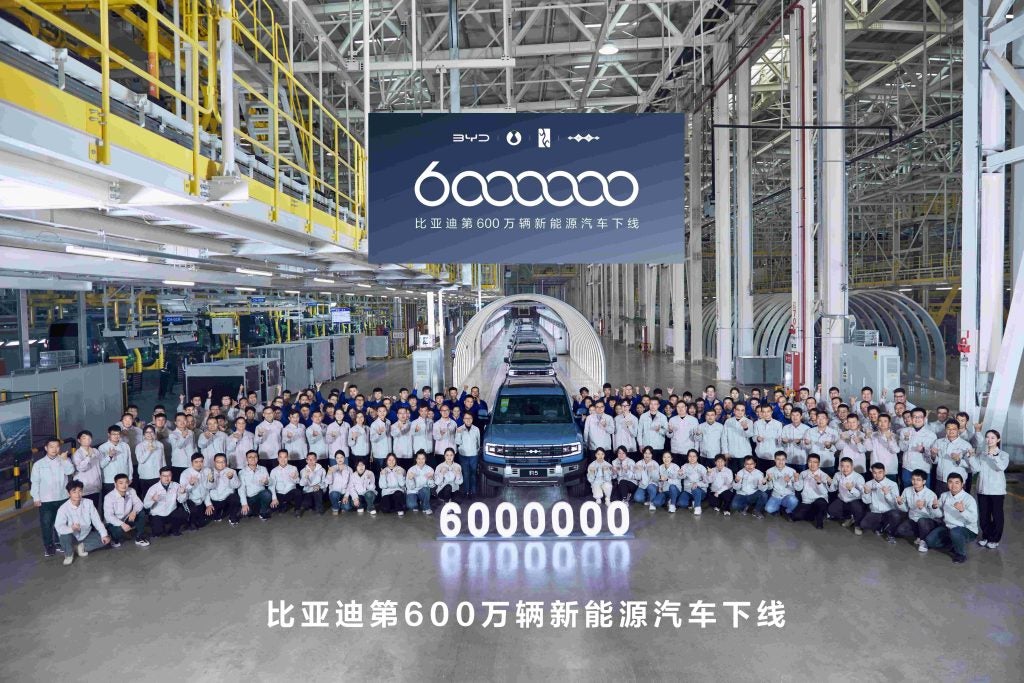For the past century, auto engineers have mulled over the idea of a puncture proof tyre. Are we there yet? While the so-called run-flat tyre has been around for a while, there are still a few obstacles to overcome before we shall see its widespread adoption. Matthew Beecham reports.
Run-flat tyres are specially constructed enabling them to be driven on in the event of loss of air pressure. It means the driver can either drive home or to a garage to fix the tyre. Run-flat tyres allow a motorist with a puncture to drive the car up to 120 miles at a maximum speed of 50mph before repairing the tyre.
For the automakers, equipping their vehicles with run-flat tyres enables them to offer security and safety benefits and, more significantly from a commercial perspective, a reduction in the overall weight of the car and an opportunity to optimise its load area. A car designed with a run-flat system can be designed with more boot (trunk) capacity because the spare wheel, jack and tools are eliminated. The extra space also opens up further possibilities for hybrid and LPG fuelled cars.
There are basically two types of run-flat systems. The self-supporting and the support ring type. The self supporting run-flat tyre has reinforced sidewalls to support the load of the vehicle even after a loss of tyre pressure. With the support ring-type system, a core ring supports the vehicle in case of air loss by fixing the tyre bead on the rim.
A key issue is whether run-flat tyres should be compatible with existing standard wheel rims or whether a new design of rim is preferable. Michelin committed itself to a completely new rim design with its PAX (originally PAV) concept, while its main rivals Bridgestone and Goodyear offer run-flats which can be mounted on standard rims.
How well do you really know your competitors?
Access the most comprehensive Company Profiles on the market, powered by GlobalData. Save hours of research. Gain competitive edge.

Thank you!
Your download email will arrive shortly
Not ready to buy yet? Download a free sample
We are confident about the unique quality of our Company Profiles. However, we want you to make the most beneficial decision for your business, so we offer a free sample that you can download by submitting the below form
By GlobalDataLast year, Bridgestone alone shipped about 5 million pieces out of Japan. “Some of that volume went to Europe while some went to the US,” said Gert Meylemans, senior manager, corporate PR, Bridgestone Europe NV/S. “We are still very dominant at the BMW group, outside the Mini. Our run-flats are on the BMW 5 Series. I think there are still some OEMs waiting to see if this run-flat technology can be applied to mass market vehicles.” Bridgestone has come a long way since it rolled out its first run-flat in the early 1980s specifically built for vehicles owned by physically disabled drivers.
Other tyre makers talk of a blossoming market. “Demand for run-flat is increasing as the demand from car manufacturers [gathers momentum],” said Pierre Menendes, corporate communication – technical, Michelin. “The technology first appeared on armored cars and then appeared as optional equipment on the Audi A8 and A6 with our PAX system. More recently, our ZP run-flat tyres have appeared on BMW models, including the 1-Series. We are also supplying our PAX system for the Bugatti Veyron.”
Goodyear is also racing ahead in the supply of run-flat tyres. “The growth has been amazing over the past three years,” said James Bailey, corporate communications manager, Goodyear. “We launched the first Goodyear run-on-flat tyre in the early 1990s and we could actually stretch that a little bit further back to the Dunlop Denovo system which was developed here at Fort Dunlop in the 1970s. So the idea of ‘get you home tyres’ has been around for a long time. It has really been in the last 3 – 5 years that that has really taken off. And if we combine the Goodyear and Dunlop brands across Europe, we have a number one position in that market.”
Goodyear’s initial growth in this market came from BMW’s commitment to the technology. In 2002, the current shape 5 Series was offered with run-flat tyres as an option followed by the 1 Series. “The 1 Series was significant because it was the first BMW to be totally designed around run-flat tyres. It actually meant optimizing the suspension and damper settings purely to work with these run-on-flat tyres rather than having a compromise that could work with either type of tyre.”
Goodyear sees no abatement in demand for run-flats either. Bailey added: “In the last three years, we have gone from selling 1 million tyres to 5 million tyres in total. We would expect that same kind of growth once again over the next three years simply because of the number of cars coming onto the road with run-on-flat fitment. But we have a big job to do which is basically get [consumer] acceptance of the technology. So that is really where our advertising and PR activity is targeted at the moment.”
Although run-flat technology has been known for decades, there are still myths about run-flats held by the public and even trade that have yet to be dispelled. An auto executive told us: “When we talk about public perception of run-flats, it is probably only in the past year that drivers are becoming aware of the technology. That is despite the fact that it has been around in various shapes and forms for decades. But it is only now that the technology has become really suitable for mass-market cars. Run-flat tyres have huge benefits for drivers in terms of primary safety. For example, if you have a tyre blowout on the motorway, the tyre stays on the rim allowing the driver to retain full control of the car.
“The secondary safety benefit is that when you have had the puncture, you can choose where you want to be stranded. When it comes to communicating the advantages of our run-flat system, we do have to make it clear that it doesn’t require special wheels and that we strongly recommend a tyre pressure monitoring system to be fitted. The reason for that is the performance of a car tyre that is run on run-flat can be so good that you really need a light on the dashboard to tell you the tyre is flat. Also, amongst the more knowledgeable drivers out there, there has been a misconception about the ride quality on run-flat tyres. And that really stems from the early fitment of run-flats going back more than five years ago when it was an option on certain cars. That was because the early run-flats were predominantly designed for the security car sector such as the armoured versions of BMWs and Mercedes. The latest run-flat systems, however, are significantly different in terms of materials, compounds and side-wall construction.”
Demand for run-flats in North America, however, has yet to take off. “Europe is pretty much leading the charge for run-flat tyres,” said Dewey Beach, director of product management, Cooper Tire & Rubber. “We are wrapping up a development programme on run-flat tyres that we should be introducing some time in 2007. It is a highway comfort type tyre as well as a winter tyre for next season. So we shall be covering that for the European market. In North America, however, it is really lacking in the OE market and it has certainly not caught on in the aftermarket.”
While market demand for run-flat tyres is gaining momentum, the tyre industry has not yet discovered all its true potential. Tyre weight and stiffness are still areas of improvement. At OE level, BMW is fitting run-flat tyres as standard. Other OEMs have homologated run-flat tyres but mainly as optional fitments.
Matthew Beecham
Research link: Global market review of automotive tyres – forecasts to 2013 (download)





